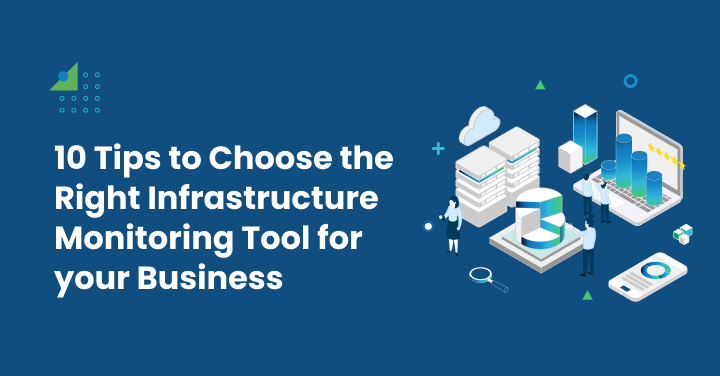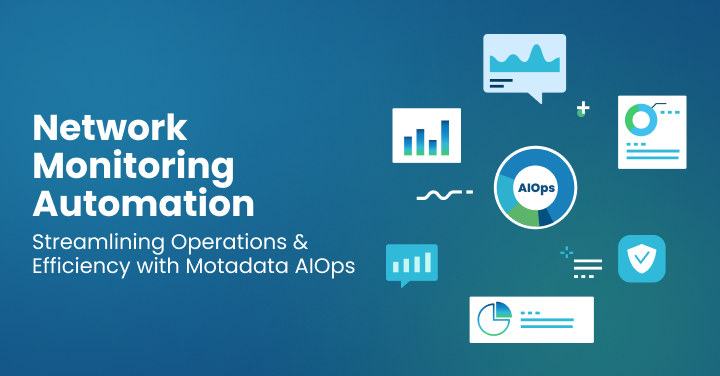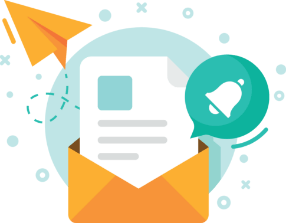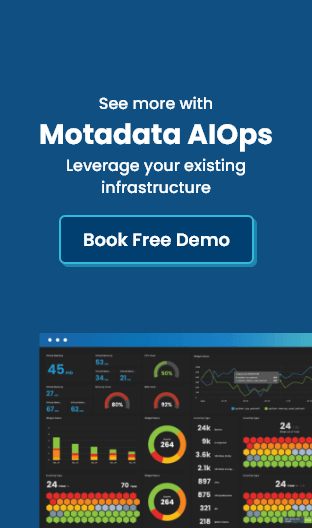Cyberattacks on cloud-based systems are becoming more sophisticated, with 22% of business professionals voicing it as a significant concern.
In 2024 alone, public cloud systems accounted for 25% of breaches, with almost half involving sensitive customer data.
As more organizations migrate to the cloud, traditional security solutions struggle to keep up. Conventional cloud computing methods rely heavily on manual processes, making it easy for attackers to infiltrate systems unnoticed.
They also involve lengthy mitigation steps, delaying responses to threats. Additionally, their lack of scalability makes it challenging to keep up with complex cloud environments and evolving cyber threats.
AI and automation have emerged as ideal solutions to address these limitations.
How AI and automation are enhancing cloud security solutions is that AI-powered security systems automatically identify potential threats before they cause harm.
These systems also use machine learning algorithms to continuously adapt to evolving attack patterns.
In this guide, I’ll discuss how AI and automation enhance cloud security solutions and how adopting them can strengthen your organization’s defenses against cyber threats.
The Rise of AI in Cloud Security
AI algorithms analyze vast datasets in real time to identify patterns, anomalies, and potential threats. Unlike traditional security measures, which rely on static, predefined rules, AI is dynamic and continuously learns from new data.
This makes it more effective in combating emerging threats and is a prime example of how AI and automation enhance cloud security solutions.
Here are some of the key AI applications in cloud security:
Threat Detection
AI-powered enterprise cloud security solutions can analyze network traffic, logs, and user behavior to detect real-time threats like malware, ransomware, and phishing attacks.
These systems can also enhance cloud email security by scanning and blocking suspicious emails and attachments. This is a clear example of how AI and automation enhance cloud security solutions.
For instance, Google’s Chronicle uses AI-driven threat detection to analyze billions of security events in real-time, and employing email verification can help mitigate the risks of unverified or spam emails.
Anomaly Detection
AI can detect unusual activities that may indicate a security breach. It uses machine learning algorithms and behavioral analysis to identify normal behavior and flag deviations. This helps you prevent insider threats and unauthorized access attempts.
Vulnerability Management
Unlike humans, AI can automatically scan large cloud environments to identify vulnerabilities. How AI and automation enhance cloud security solutions by predicting which vulnerabilities attackers will most likely exploit.
User and Entity Behavior Analytics (UEBA)
AI monitors user behavior in real time to detect insider threats and account compromises. AI and automation enhance cloud security solutions by using techniques like behavioral profiling and anomaly detection to flag unusual login locations and abnormal data access patterns.
Benefits of AI in cloud security:
- Improved accuracy
- Faster response times
- Increased efficiency
- Reduced manual effort
Automating Cloud Security Operations
The cost of cybercrime is expected to reach an alarming $13.82 trillion by 2028. With that in mind, you can’t rely on slow, manual processes to protect your organization’s data.
Automation reduces manual effort, enhances efficiency, and reduces human error. It acts as a force multiplier, allowing your security team to do more with fewer resources.
AI and automation are enhancing cloud security solutions by streamlining security operations. By automating key security tasks, you can reduce response times to threats.
Let’s take a look at the key automation applications in cloud security:
Incident Response
Security incidents are unavoidable, but the speed and efficiency of your response determine the outcome. AI and automation are enhancing cloud security solutions by streamlining your incident response plan by automating triage, investigation, and remediation.
Security Orchestration, Automation, and Response (SOAR) platforms integrate security tools, orchestrate responses, and automate workflows, making incident response faster and more effective.
Configuration Management
Automation ensures your resources are configured securely and remain compliant over time. Infrastructure as Code (IaC) tools programmatically deploy cloud resources, while configuration management tools continuously monitor cloud environments and correct deviations.
Compliance Management
Automation ensures compliance with industry standards like GDPR, HIPAA, and SOC 2. AI compliance and automation enhance cloud security solutions by continuously monitoring, reporting, and enforcing security compliance. Cloud security platforms like Qualys automatically scan for compliance violations and generate reports.
Security Information and Event Management (SIEM)
AI and automation can enhance your SIEM system by improving threat detection and incident response. Machine learning detects anomalies in real-time and reduces false positives, while automation accelerates incident response, minimizing damage.
Benefits of automation in cloud security:
- Reduced response times
- Improved consistency
- Increased efficiency
- Reduced manual errors
AI and Automation: A Synergistic Approach
AI and automation work together to create a security system that enhances efficiency, reduces response times, and minimizes human error.
Here’s how AI and automation are enhancing cloud security solutions:
Threat Detection and Response
AI continuously monitors your network’s activity, identifying suspicious patterns such as unauthorized access attempts or malware infections.
Once AI detects a threat, automation steps in to contain it, isolating infected systems and blocking unauthorized users.
For instance, when AI detects a malware infection, it immediately quarantines the affected device and halts further data transmission.
Task Prioritization and Execution
AI analyzes incoming security alerts to determine which threats require immediate attention. Automation then executes necessary actions.
How AI and automation are enhancing cloud security solutions is by identifying vulnerabilities in cloud storage permissions that could expose confidential data. They automatically adjust access settings to mitigate risks.
Insight Generation and Implementation
AI and automation enhance cloud security solutions through insight generation and execution. AI provides deep security insights by analyzing threat intelligence data, while automation executes action based on the insights.
Although AI and automation enhance security, human input is crucial for interpreting AI-driven insights and making complex security decisions.
Choosing the Right AI and Automation Solutions
I’ve explained how AI and automation are enhancing cloud security solutions. However, not every tool is the right fit for your organization. Before implementing AI and automation solutions, you must evaluate these crucial factors:
Assess Your Specific Needs and Requirements
Clearly define your organization’s needs. Are you trying to reduce manual workloads, improve your employee recognition software, or enhance the accuracy of threat detection?
Understanding your goals will help you choose AI and automation solutions that directly address your concerns. For instance, if your goal is to reduce manual workloads, AI for customer service can automatically route inquiries and provide instant answers through chatbots.
Consider Your Budget and Resources
AI and automation solutions can vary in cost. Pricing is a key consideration when choosing the appropriate ecommerce tools for your business.
So, establish a clear budget for your cloud security AI and automation initiatives to select financially feasible solutions for your organization.
Evaluate the Vendor’s Reputation and Experience
Before committing to a vendor, research customer and analyst reviews. Check if they have a strong track record with companies similar in size or industry to yours.
Look for Solutions That Integrate Well With Your Existing Security Infrastructure
The best AI and automation solution should fit seamlessly into your cloud security infrastructure.
Here’s what to look for:
- Compatibility with your current cloud providers
- Support for your SIEM system
- Easy data flow between tools
- API accessibility and plug-and-play connectors
Consider Solutions That Offer a Free Trial or a Proof of Concept (PoC)
Vendors who are confident in their products usually offer a free trial or PoC. This lets you see how the solution performs with your data, users, and processes and identify hidden costs or limitations before implementation.
Knowing how AI and automation are enhancing cloud solutions is just the beginning. You must select the right solution and continuously monitor, test, and optimize it to ensure its effectiveness.
The Future of AI and Automation in Cloud Security
AI and automation are already enhancing cloud security solutions, but what’s ahead is even more exciting.
Here are the trends reshaping this landscape and a sneak peek at what’s around the corner:
The Rise of Machine Learning
ML algorithms are trained on massive datasets of regular and malicious cloud activity. This allows them to identify subtle anomalies and deviations from established baselines that traditional rule-based systems might miss.
Threat Detection Is Getting More Sophisticated
Organizations are adopting more sophisticated techniques to counter cyberattacks. AI-powered cloud security solutions can simulate potential attack paths and vulnerabilities in your cloud environment, allowing you to seal off weak spots in advance.
Complex Security Tasks Are Becoming Automated
Cloud security automation is no longer limited to basic tasks like blocking IP addresses. Organizations now automate more complex cloud security tasks, such as incident management, policy enforcement, compliance, and reporting.
AI and Automation Are Integrating With Other Security Tools
AI and automation integrate security technologies like SIEMs, identity access management, and endpoint protection to create a unified defense system.
So, What Does the Future Look Like?
Looking ahead, this is how these trends are likely to evolve over the next few years:
- AI and automation will transition from valuable tools to necessary components of cloud security solutions.
- Rather than replacing human experts, AI and automation will free them up to handle higher-level strategic roles like training and fine-tuning AI algorithms and analyzing complex threat intelligence.
- The future of cloud security will move beyond reactive measures to a proactive and even predictive stance. AI’s analytical capabilities will enable you to anticipate and intercept advanced cybersecurity threats before they materialize.
Conclusion
Now, you know how AI and automation are enhancing cloud security solutions. They are your frontline allies against evolving cyber threats. They bring speed, precision, scalability, efficiency, and adaptability that traditional cloud security solutions simply can’t match.
From detecting threats in real-time to automating responses and reducing human error, AI and automation are ideal solutions for strengthening cloud security posture.
Don’t let outdated methods leave you vulnerable. Take the first proactive step — request a demo today to see our platform in action!
FAQs:
AI in cloud security refers to using artificial intelligence to detect threats, analyze data, and respond to security incidents in real time across cloud environments.
AI and automation enhance cloud security by identifying threats promptly, reducing manual errors, and streamlining incident response.
Examples of AI-powered cloud security tools include Motadata’s AIOps, Microsoft Defender for Cloud, and AWS GuardDuty.
Configuration management, incident response, compliance management, and access management are some key cloud security tasks you can automate.
No, AI and automation support your security team by handling repetitive tasks and speeding up detection. Human expertise is still crucial for strategic decisions and complex threat analysis.
Implementing AI and automation challenges include high initial setup costs, integration complexity, and data quality issues.
The cost of implementing AI and automation in cloud security varies depending on the size of your organization, specific tools, level of customization, and other factors.






